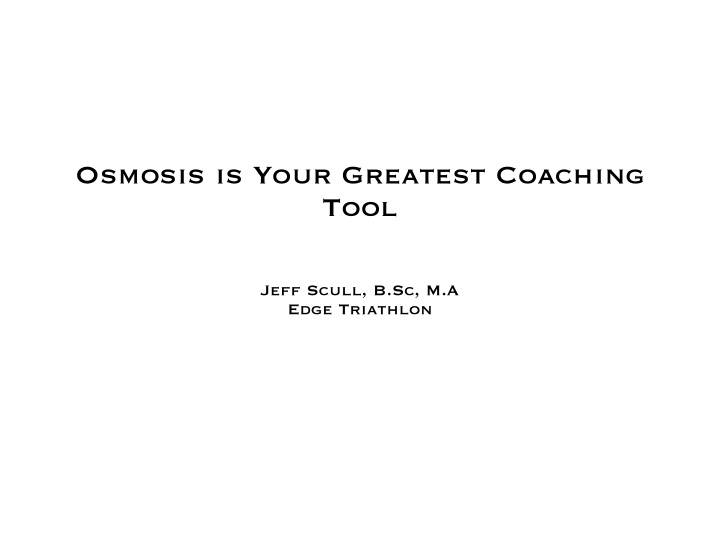



Osmosis is Your Greatest Coaching Tool Jeff Scull, B.Sc, M.A Edge Triathlon
Summary 1. Investigation into the Motivation Strategies of Elite ITU Triathlon Coaches 2. Club Development: Edge Triathlon
Why Motivation? Training Business Culture
10 Years Experience in 2 Weeks • Skype interview with Joel Filliol • Two continents: 3 additional coaches / 2 groups
Theory The Motivational Model of the Coach-Athlete Relationship (Mageau & Vallerand, 2003)
Research Design • Semi structured interviews (1 hr) • Questionnaires for athletes
Autonomy Supportive Coaching 1. Providing Choice Within Specific Rules and Limits 2. Provide a Rational for Tasks and Limits 3. Acknowledging the Other Person’s Feelings and Perspectives 4. Providing Athletes with Initiative Taking and Independent Work 5. Providing Non-Controlling Competence Feedback 6. Avoid Controlling Behaviour 7. Prevent Ego-Involvement in Athletes
1. Providing Choice Within Specific Rules and Limits 1. Creates ownership 2. Increases IM 3. Needs to be individualized 4. Results in better decision making
2. Provide a Rational for Tasks and Limits � • 1 of 4 coaches = detailed physiological explanations • 3 of 4 coaches = big picture explanations - workout execution (process, demands) - core values
3. Acknowledging the Other Person’s Feelings and Perspectives • Go beyond to provide perspective, examples, experience • Remove isolation • Allow athletes to make decisions
4. Providing Athletes with Initiative Taking and Independent Work • Mental game • Within sessions • Self belief • Betterment tasks
5. Providing Non-Controlling Competence Feedback 6. Avoid Controlling Behaviour • Constructive Criticism • Praise sparingly and with intent (examples) • Lead athletes with tasks and perspective • Appropriate race expectations � �
7. Prevent Ego-Involvement in Athletes • Task orientation vs performance outcomes • Practice competition with intent
Recommend
More recommend